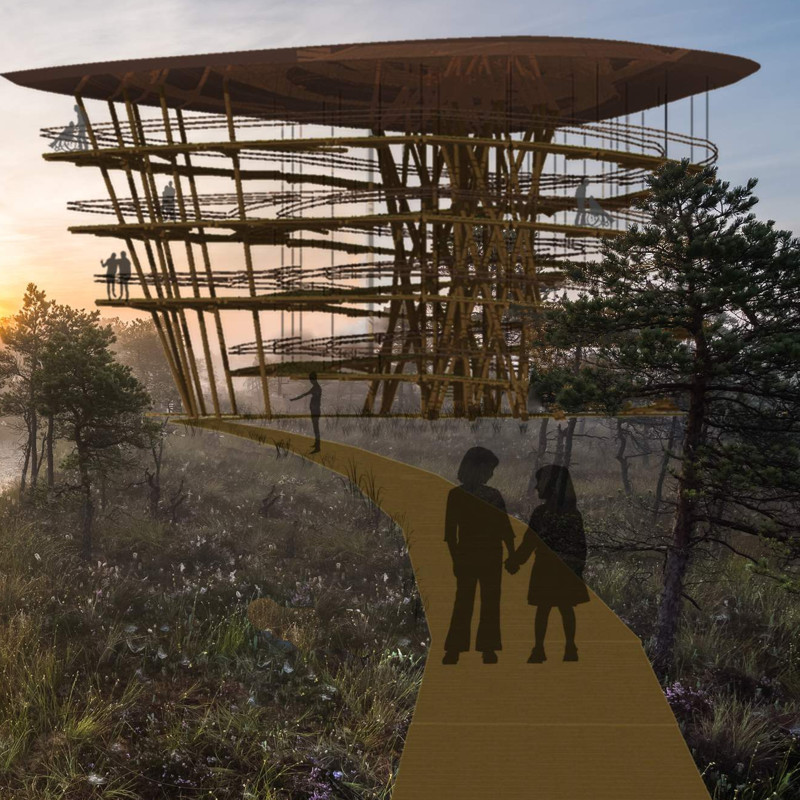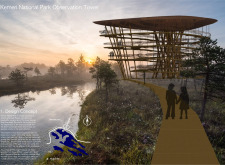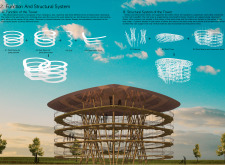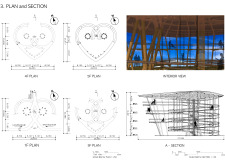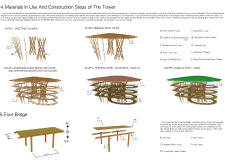5 key facts about this project
## Kemeri National Park Observation Tower Architectural Design Report
### Overview
The Kemeri National Park Observation Tower is situated in Latvia, designed to enhance visitor engagement with the park's diverse ecosystems of forests and bogs. The intent is to create an accessible vantage point that fosters appreciation for the natural environment. The design reflects the interaction between the park's existing boardwalks and pathways, effectively encouraging exploration and awareness of the area's biodiversity.
### Spatial Organization and Access
The tower features a thoughtful spatial organization that prioritizes accessibility. Visitors can ascend and descend the structure using a series of ramps that connect three observation decks at different elevations. This arrangement not only provides expansive views of the landscape but also accommodates varying visitor needs, promoting an inclusive experience. The integration of ramps alongside a staircase allows for efficient circulation while maintaining structural integrity through an interconnected system of columns and suspension components.
### Sustainable Material Selection
The observation tower employs a range of locally sourced, sustainable materials, reinforcing a commitment to environmental stewardship. Primary structural elements include log columns that mirror the organic forms found in the adjacent forest. Sawn timber comprises the deck beams and floors, ensuring structural strength while maintaining aesthetic continuity with the surroundings. Other materials include Ultra High Molecular Weight Polyethylene (UHMWPE) fibers for tension systems, copper for roofing, and cohesive timber for handrails and decks. These choices not only contribute to the tower's durability but also enable it to harmonize with its natural context over time.


